As the digital and physical shopping realms converge, delivering a seamless and consistent customer experience across multiple channels has transformed from a competitive advantage to a strategic business necessity. The importance of an omnichannel customer experience strategy lies in its direct impact on customer satisfaction and loyalty. Today’s consumers expect to interact with brands across various platforms—social media, mobile apps, websites, and physical stores—without encountering any friction. They demand consistency in service, pricing, and product availability. Meeting these expectations is essential for enhancing customer satisfaction and building long-term loyalty, particularly in a marketplace where alternatives are just a click away.
Businesses excelling in omnichannel customer engagement see remarkable loyalty, with 89% of buyers becoming repeat customers. Conversely, companies with less effective omnichannel approaches manage to retain only about 33% of their customers. Thus, the disparity in these figures highlights the substantial rewards of a well-executed omnichannel strategy and the importance of synchronizing every customer touchpoint. From online shopping carts to in-store interactions, ensuring that each channel operates not in isolation but as part of a cohesive whole, is key for retailers committed to thriving in the new phygital era.
This comprehensive guide aims to arm retailers with the knowledge and tools necessary to implement an effective omnichannel customer experience strategy. Each section is designed to be immediately useful for the reader, offering practical advice that can be applied to enhance their current customer experience strategies. By diving deep into strategies that unify customer interactions across all channels, this blog post will serve as a vital resource for retailers. It will detail how integrating these approaches can lead to increased sales, improved customer retention, and a stronger brand reputation.

What is an omnichannel customer experience strategy?

An omnichannel customer experience strategy is a coordinated approach that ensures a consistent and personalized customer experience across all channels and touchpoints of a retail brand. This strategy transcends traditional retail boundaries by integrating interactions from in-store, online, mobile, and beyond, to create a unified customer journey. At its core, the omnichannel strategy acknowledges that the customer journey is no longer a linear path but a complex network of interactions influenced by various media and platforms.
Distinction from traditional strategies
Unlike traditional retail strategies that often operate channels in isolation, an omnichannel approach ensures that all channels are interconnected. In traditional settings, customers might encounter disjointed experiences such as differing prices, product availability, or customer service depending on whether they shop online or in-store. Omnichannel eliminates these inconsistencies, facilitating a fluid transition between channels. This enhances the shopping experience and strengthens brand loyalty and trust by delivering a predictable and reliable interaction irrespective of the chosen channel.
This shift towards an omnichannel approach is a fundamental evolution in retail operations in the digital age. By integrating data analytics, customer relationship management (CRM) systems, and advanced technological infrastructures, retailers can offer highly personalized experiences that anticipate and meet customer needs at every turn. This strategy leverages detailed insights into customer behaviors and preferences, captured across all channels, to tailor marketing, sales, and support efforts both effectively and efficiently.
Key benefits of an omnichannel customer experience strategy

An effective omnichannel customer experience strategy offers a multitude of benefits over traditional, siloed customer engagement methods. These advantages enhance customer interactions, significantly impacting a retailer’s operational efficiency and market competitiveness. Here are the key benefits:
Enhanced customer satisfaction and loyalty
Omnichannel strategies provide a consistent and seamless customer experience across all platforms, from mobile and online to in-store interactions. This consistency ensures that customers enjoy a familiar and reliable experience, regardless of how or where they interact with the brand. Higher satisfaction translates directly into increased loyalty and repeat business.
Increased revenue
By offering a unified shopping experience, omnichannel strategies encourage more frequent purchases and higher spending. Customers who can shop across multiple channels spend more than those who interact with a brand through a single channel. This increased spending is often due to the ease of cross-channel visibility of products and offers, which can prompt additional or higher-value purchases.
Improved operational efficiency
Integrating channels under a single omnichannel customer experience strategy reduces operational redundancies and improves efficiency. Centralizing inventory management, for example, allows for more accurate stock control, optimized fulfillment, and reduced holding costs. Moreover, unified customer data reduces cross-channel discrepancies and duplicated efforts in marketing and customer service, leading to cost savings and faster response times.
Better data collection and utilization
An omnichannel approach enables more comprehensive data collection across various touchpoints. When these data are effectively analyzed, they provide invaluable insights into customer behaviors, preferences, and trends. Retailers can leverage these data to tailor marketing campaigns, adjust product offerings, and optimize user experiences across channels. Additionally, they can predict future buying behaviors, enhancing the ability to meet customer needs proactively.
Stronger competitive advantage
An omnichannel customer experience strategy provides a clear competitive edge in a retail environment where differentiation is key to attracting and retaining customers. Brands that successfully integrate their channels offer a superior customer experience that meets the modern consumer’s flexibility, convenience, and personalization expectations. This sets them apart from competitors, positioning them as forward-thinking and customer-centric businesses.
The components of an omnichannel customer experience strategy
Customer journey mapping
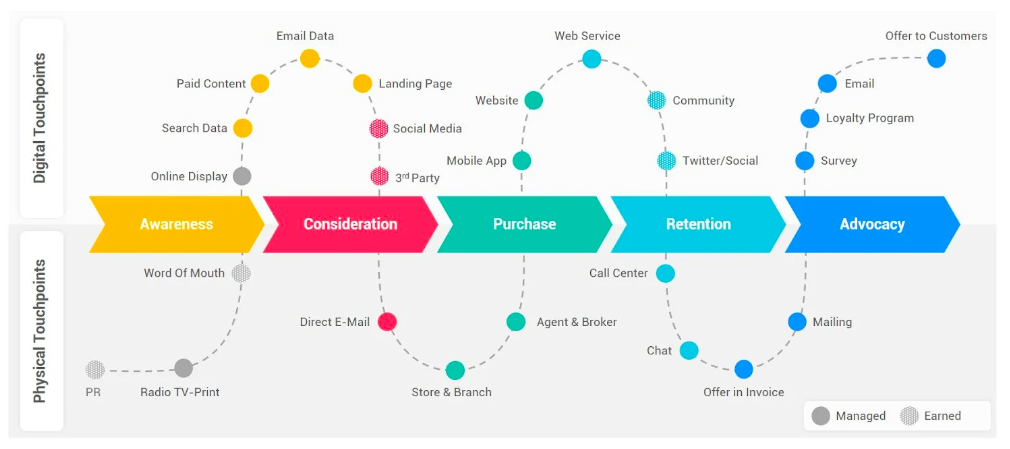
Customer journey mapping visually represents the conversion funnel when customers interact with a company, from initial contact to long-term loyalty. This tool helps businesses understand and enhance each point of customer interaction.
How to do it:
- Identify touchpoints: Start by identifying all possible customer interactions or touchpoints with your brand, both online and offline.
- Gather data: Collect data from various sources like sales, customer service, and online analytics to understand how customers move through these touchpoints.
- Create the map: Visualize the journey by mapping out each touchpoint, the paths customers take, and their experiences at each stage.
- Analyze and optimize: Use the map to identify areas of friction, opportunities for improvement, and key moments that matter to customers.
Time needed (work hours): 20-40 hours
Useful tools:
- Diagramming and mapping tools: Software that allows for the creation and editing of complex diagrams to visually represent customer journeys.
- Collaborative whiteboard tools: Online platforms that facilitate team collaboration on visual projects in real-time.
Data integration
Data integration involves combining data from different sources to provide a unified view. This practice allows companies to achieve a comprehensive understanding of customer behaviors and preferences across all channels.
How to do it:
- Identify data sources: Determine which data sources are crucial for a unified customer view, including CRM systems, social media analytics, and sales data.
- Choose an integration tool: Select a tool that can handle the complexity and volume of your data.
- Implement the integration: Merge the data to ensure that information flows seamlessly between systems, providing real-time insights into customer behavior.
- Continual monitoring and updating: Regularly update and monitor data integrity to ensure accurate, actionable insights.
Time needed (work hours): 50-100 hours
Useful tools:
- Data integration platforms: Tools that assist in combining data from various sources into a single, coherent database, ensuring consistency and accessibility.
- ETL (Extract, Transform, Load) systems: Software designed to extract data from different sources, transform it into a suitable format, and load it into a centralized database.
Channel consistency
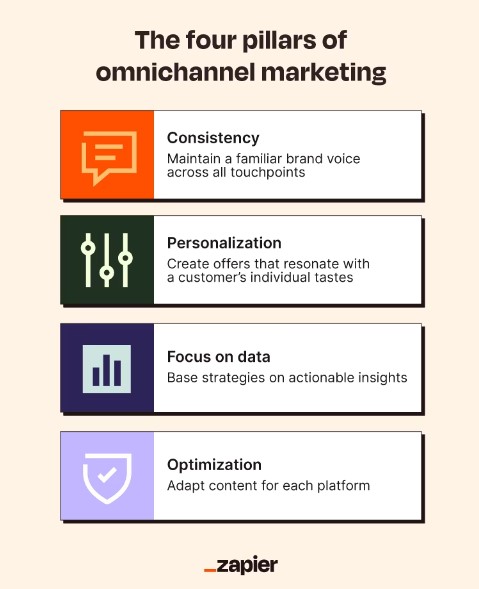
Channel consistency ensures that customers receive a uniform experience across all platforms, including messaging, branding, and service quality. This consistency helps in reinforcing brand identity and trust.
How to do it:
- Standardize communication: Develop and implement standard communication guidelines across all channels.
- Align brand elements: Ensure that visual and verbal branding is consistent, including logo design, color schemes, and tone of voice.
- Regular training: Conduct regular training sessions for staff across all channels to ensure they are familiar with the brand standards.
Time needed (work hours): 30-50 hours
Useful tools
- Brand management software: Tools that help maintain brand consistency across various channels by standardizing marketing communications.
- Social media management platforms: Systems that allow for the scheduling and analysis of social media posts across multiple platforms to ensure consistent messaging.
Technology infrastructure
Technology Infrastructure refers to the integrated systems and software solutions that support omnichannel strategies by allowing for efficient data collection, storage, and analysis.
How to do it:
- Assess needs: Determine what technological capabilities are necessary to support your omnichannel strategy.
- Select solutions: Choose the appropriate CDP, CRM, ERP, and data analytics platforms that integrate well with each other.
- Implement systems: Deploy these systems to ensure they work together seamlessly, providing a comprehensive view of customer interactions.
Time needed (work hours): 100-200 hours
Useful tools:
- CDPs (Customer Data Platforms): Systems that consolidate and integrate customer data from multiple sources to build a comprehensive customer profile.
- CRM (Customer Relationship Management) systems: Platforms that help manage a company’s interactions with current and potential customers, centralizing data for ease of access.
- ERP (Enterprise Resource Planning) systems: Integrated management of core business processes, often in real-time and mediated by software and technology.
Personalization (or hyper-personalization)
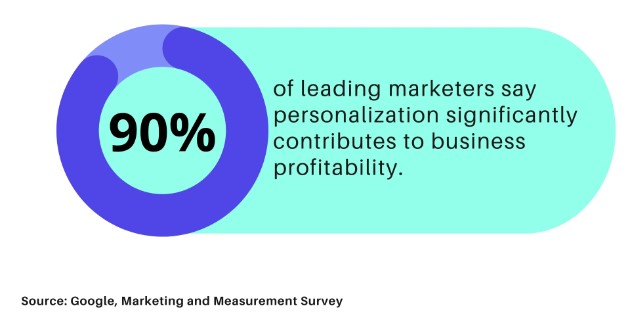
Personalization in omnichannel marketing involves tailoring marketing messages and shopping experiences to individual customer preferences and behaviors, thereby enhancing customer engagement and satisfaction.
How to do it:
- Data analysis: Use integrated customer data to understand individual preferences and behaviors.
- Segmentation: Create customer segments based on data insights.
- Tailored experiences: Develop personalized marketing campaigns and shopping experiences for each segment.
Time needed (work hours): 40-80 hours
Useful tools:
- CDPs (Customer Data Platforms): Systems that consolidate and integrate customer data from multiple sources to build a comprehensive customer profile.
- Marketing automation tools: Software that automates marketing actions or tasks, personalizes customer interactions, and delivers targeted campaigns based on customer data.
Employee training and engagement
Employee training and engagement involve the strategies and practices used to enhance the skills and commitment of staff members, ensuring they are effective ambassadors of the company’s brand and customer experience strategy.
How to do it:
- Identify training needs: Assess the skills and knowledge gaps among employees that could hinder effective customer service across channels.
- Develop training programs: Create comprehensive training sessions tailored to the needs of various roles within the company, focusing on omnichannel strategies, customer service skills, and product knowledge.
- Implement engagement initiatives: Introduce programs that boost morale and motivation, such as recognition schemes, feedback sessions, and career development opportunities.
- Ongoing assessment and feedback: Regularly evaluate the effectiveness of training and engagement programs and adjust them based on employee feedback and performance metrics.
Time needed (work hours): 30-60 hours for initial training programs, and ongoing weekly or monthly refreshers.
Useful tools:
- Learning Management Systems (LMS): Platforms that facilitate the creation, delivery, and tracking of online education courses.
- Employee engagement software: Tools designed to improve company culture by facilitating communication, recognition, and feedback among teams.
Feedback loops and continuous improvement

Feedback loops and continuous improvement are systematic processes aimed at enhancing services or products through regular collection and analysis of feedback, leading to iterative adjustments.
How to do it:
- Gather feedback: Collect data from customers and employees about their experiences and satisfaction levels using surveys, focus groups, and direct feedback tools.
- Analyze feedback: Use the collected data to identify common issues or areas for improvement in customer experience.
- Implement changes: Make targeted adjustments based on the feedback, focusing on those that will most improve customer satisfaction and operational efficiency.
- Review and repeat: Regularly review the impact of the changes made and continue the cycle of feedback and improvement to adapt to changing customer needs and business goals.
Time needed (work hours): Continuous process, with quarterly reviews typically taking 20-40 hours of analysis and planning.
Useful tools:
- Customer feedback management software: Tools that collect and analyze customer feedback across multiple channels.
- Business intelligence platforms: Systems that provide comprehensive analysis and visualization of data to support decision-making processes.
Agile management practices
Agile management practices involve flexible, iterative approaches to project management that prioritize customer satisfaction, team collaboration, and responsiveness to change, often used in software development and increasingly adopted in other areas.
How to do it:
- Define agile frameworks: Select and tailor agile methodologies (like Scrum, Kanban, or Lean) that best fit the organization’s needs.
- Form cross-functional teams: Organize small, cross-functional teams that can quickly adapt to changes and manage tasks more fluidly.
- Iterative development: Break work into smaller segments that are completed in short cycles (sprints), allowing for regular reassessment and adjustments based on stakeholder feedback.
- Regular retrospectives: Hold frequent meetings to reflect on what went well, what didn’t, and how processes can be improved moving forward.
Time needed (work hours): Setup and initial adaptation might take 40-80 hours; ongoing execution requires regular sprints and review cycles.
Useful tools:
- Project management software: Platforms that support agile methodologies, facilitating task management, collaboration, and real-time communication.
- Digital whiteboards: Interactive tools that allow teams to visualize workflows, track progress, and manage tasks dynamically.
Developing a 360-degree omnichannel customer experience strategy
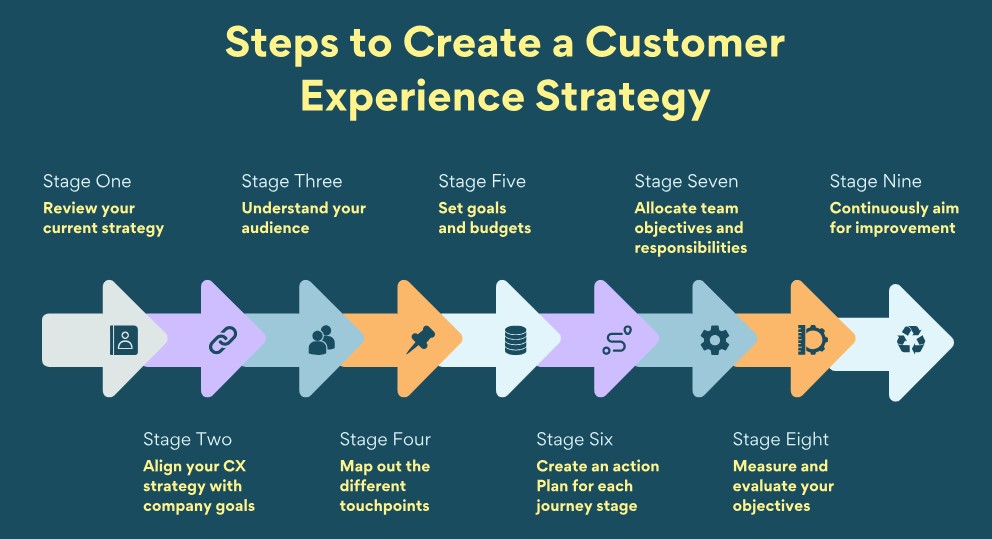
A holistic omnichannel strategy for the retail industry requires a comprehensive and detailed approach, emphasizing customer understanding and journey design across all channels. Implementing these steps will help retailers create an effective omnichannel strategy that meets and exceeds today’s customers’ evolving expectations. Here’s how to implement such a strategy step-by-step:
Step 1: Identify your customer
Data collection:
- What to do: Gather data from a variety of sources including transaction histories, web analytics, social media interactions, and customer feedback. This step is crucial because it provides a foundational understanding of who your customers are and their behaviors.
- Why: Robust data collection helps create a detailed picture of the customer base, which is essential for making informed decisions about product offerings, marketing strategies, and customer service improvements.
Customer segmentation:
- What to do: Divide your customer base into distinct groups based on shared characteristics such as demographics, buying behaviors, preferences, and engagement history.
- Why: Segmenting customers allows for more targeted and effective marketing efforts. It helps in personalizing the shopping experience for different groups, thereby increasing engagement and loyalty.
Step 2: Design the omnichannel customer journey
Mapping the customer journey:
- What to do: Create detailed maps of the customer journey for each customer segment, identifying all potential touchpoints and channels they might use.
- Why: Understanding the path that customers take from awareness to purchase and beyond allows retailers to streamline and optimize interactions at every step. It ensures a cohesive and personalized customer experience across all channels.
Channel integration:
- What to do: Ensure that all channels are integrated so that they provide a seamless experience. This includes aligning messages, offers, and customer service across platforms.
- Why: Channel integration prevents customer frustration and dissonance that can occur due to inconsistent information or services across different platforms. It enhances the effectiveness of the customer journey by creating a smooth transition between online and offline channels.
Step 3: Implement personalized engagements
Personalization techniques:
- What to do: Use the data collected and insights gained from customer segmentation to tailor interactions and communications to meet the specific needs and preferences of each segment.
- Why: Personalization increases the relevance of your communications and offerings to your customers, thereby boosting satisfaction, conversion rates, and loyalty.
Continuous personalization:
- What to do: Continuously update and refine personalization strategies based on ongoing data collection and customer feedback.
- Why: Customer preferences and behaviors can change over time. Continuous personalization ensures that the customer experience remains relevant and engaging, adapting to new trends and feedback.
Step 4: Monitor and optimize
Performance monitoring:
- What to do: Regularly track and analyze the performance of each channel and customer interaction against key performance indicators (KPIs) such as conversion rates, customer satisfaction scores, and retention rates.
- Why: Monitoring performance allows retailers to identify successful elements of their omnichannel strategy as well as areas that need improvement.
Feedback and adjustment:
- What to do: Implement mechanisms for capturing customer feedback across all channels and use this feedback to make informed adjustments to strategies and processes.
- Why: Regularly updating the strategy based on direct customer feedback ensures the customer experience is always aligned with customer needs and expectations.
Key considerations before designing your omnichannel customer experience strategy

When planning an omnichannel customer experience strategy for the retail industry, certain key considerations must be addressed to ensure its success. Here are some critical elements to think about:
- Choosing the right technology solutions: Selecting the appropriate technology involves choosing systems that can integrate easily with existing platforms and scale as business needs evolve. The technology should enable consistent data flow across channels, providing a single view of the customer that facilitates personalized engagement.
- Integrating across channels: Effective integration across channels ensures that the customer experience is seamless, whether the customer is online, on a mobile app, or in a physical store. Integration involves aligning marketing, sales, and customer service strategies across all platforms so that they complement each other and present a unified brand message.
- Understanding customer expectations: Before designing your strategy, it’s crucial to understand your customers’ expectations at every touchpoint. This involves analyzing customer feedback, studying market trends, and conducting competitive analysis to gauge what drives satisfaction and loyalty in your sector.
- Maintaining data security and privacy: With the increase in data integration across multiple channels, maintaining robust data security and privacy becomes paramount. This involves implementing advanced security measures, adhering to compliance standards, and ensuring transparency in how customer data is collected, used, and stored.
How to measure the effectiveness of your omnichannel customer experience strategy
Measuring the effectiveness of an omnichannel customer experience strategy involves tracking specific Key Performance Indicators (KPIs) and other metrics that reflect customer engagement, satisfaction, and operational efficiency.
Key Performance Indicators (KPIs) to track:

- Net Promoter Score (NPS): Assesses customer loyalty by measuring the likelihood of customers recommending the brand to others.
- Customer Satisfaction Score (CSAT): Measures customer satisfaction with a recent purchase or interaction.
- Customer Effort Score (CES): Evaluates the ease of customer interaction and resolution efforts, reflecting on the overall efficiency of the customer service experience.
Other metrics to track:
- Conversion rates
- Average order value
- Customer retention rates
- Cart abandonment rates
- Return on marketing investment (ROMI)
- Traffic (foot and online) metrics
- Time on site/dwell time
- Click-through rates (CTR)
- Social media engagement
- Customer churn rate
Reporting tools to utilize:
- Customer Data Platforms (CDPs):
Key benefits: CDPs consolidate customer data from multiple sources into a unified customer database accessible by other systems. This integration allows for more personalized marketing and a deeper understanding of the customer journey across channels.
- Business Intelligence (BI) tools:
Key benefits: BI tools help in analyzing complex data, and providing actionable insights through data visualization tools. They can track performance across various metrics and benchmark them against industry standards.
- Analytics Dashboards:
Key benefits: These dashboards provide real-time data visualization of key metrics, making it easier to monitor trends and make data-driven decisions quickly.
For more detailed guidance on Retail Analytics, Customer Data Platforms, and Reporting, these articles may provide additional insights:
- What Is a Customer Data Platform, and Why Does a Retailer Need One?
- CDP vs CRM: Differences and Key Benefits For Retailers
- Mastering CDP Strategies: A Comprehensive Guide for 2024
- CDP Pitfalls for eCommerce Businesses
- The 30 Most Important Customer Engagement Metrics You Should Track in Retail
- eCommerce Dashboard: KPIs, Key Components, and Examples for the Perfect Template
How ContactPigeon’s CDP can fuel a retailer’s omnichannel customer experience strategy
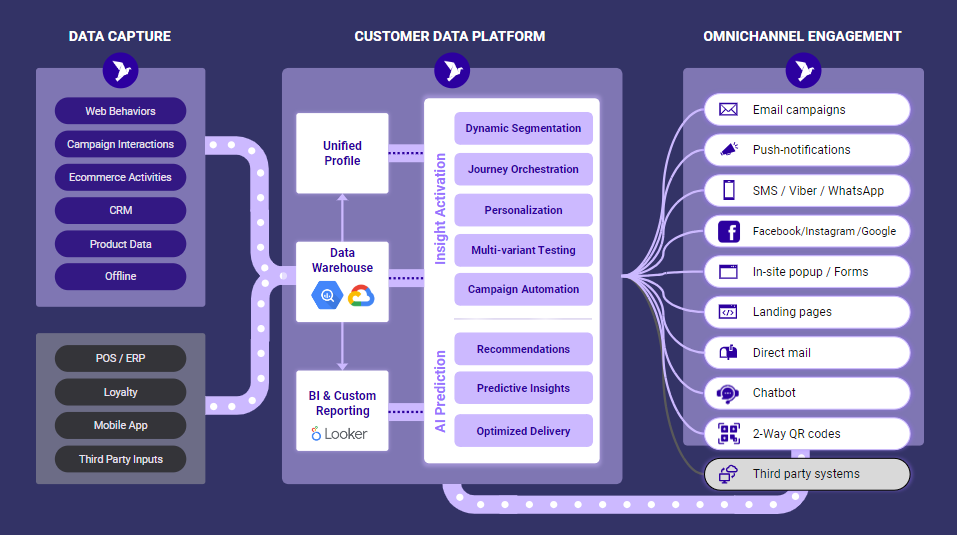
- Unified customer profiles: Creates a comprehensive view of each customer by integrating data from various channels, enhancing personalized marketing efforts.
- Seamless data integration: Offers smooth integration with numerous CMS and data warehouses, simplifying the unification of customer data.
- Built-in data warehouse: Facilitates advanced analytics with a cloud-based data warehouse that includes built-in BI, machine learning, and AI capabilities.
- Real-time data access: Provides instant access to data, allowing for timely and informed decision-making across marketing channels.
- Advanced segmentation and targeting: Enables precise customer segmentation and targeting based on detailed behavior analysis, improving campaign effectiveness.
- Personalized omnichannel engagement: Supports personalized customer interactions across all channels, ensuring a consistent and cohesive customer experience.
Publish. Collect. Learn. Repeat.
This guide highlights the crucial role of continuous, data-driven refinement and evolution in crafting a winning omnichannel customer experience strategy. By constantly analyzing, learning from customer interactions, and enhancing your approach, you can ensure sustained success.
Ready to take your customer experience to the next level? Book a demo with ContactPigeon’s Customer Experience experts today and unlock the full potential of personalized, omnichannel engagement.

Let’s Help You Scale Up





